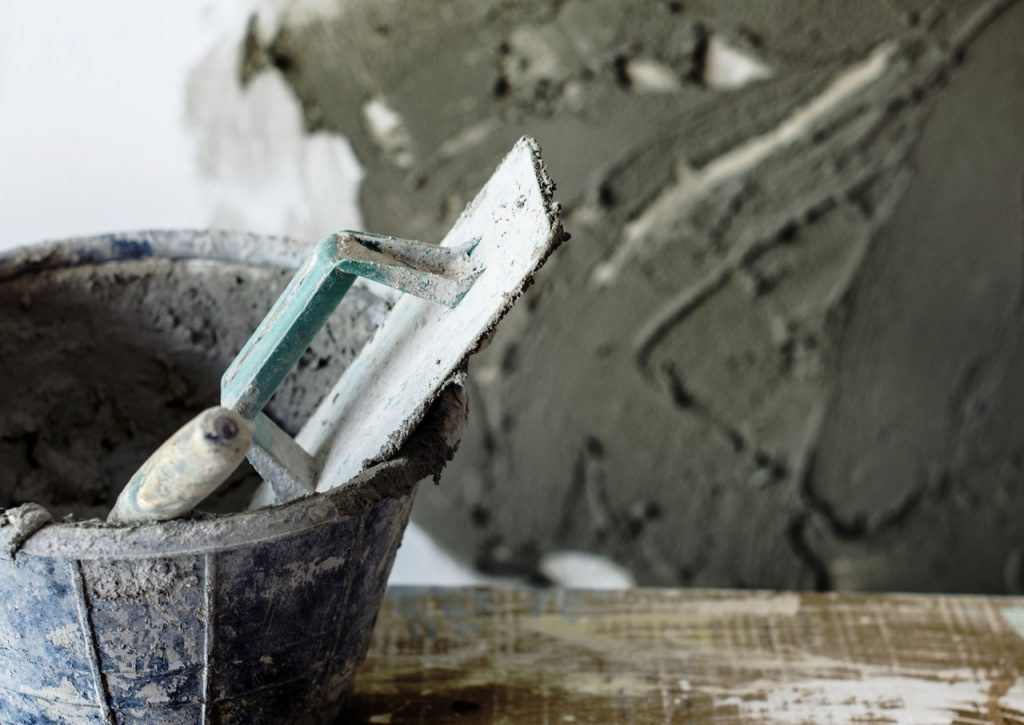When renovating a home, we face many difficult choices. One of them is choosing the right material for finishing walls. This decision can affect our comfort and even health! From time to time new products appear on the market, solving householders’ problems, also with energy-saving properties.
Gypsum plasters are the most popular kind of plasters of recent times. It owes its popularity to several factors. It is the fastest binding plaster on the market, it provides the smoothest finish, thanks to which it is not necessary to apply a putty before painting. Gypsum mortar is also relatively cheap and that is why when finishing large surfaces we choose this option. In case of gypsum plaster there is no problem with selection of substrate for the mortar. It works well on bricks and cellular concrete as well as on hollow bricks and even on foamed polystyrene. Moreover, rooms finished with gypsum plaster gain a warm and homely character. This plaster has nothing of the cool austerity of cement.

Unfortunately, gypsum plaster is not suitable to be laid in humid areas because it absorbs moisture from the rooms. In this case, there is a considerable risk of harmful fungi and mold growth. The downside of gypsum mortar is also its fragility. Gypsum is easily dented or crushed, so walls covered with gypsum plaster do not have high resistance to damage.
This type of gypsum plaster is an answer to the problem of brittleness of gypsum. Gypsum mortar with fiberglass is characterized by much higher resistance to damage than standard gypsum plaster. Glass fibre hardens the mortar and strengthens its structure, thanks to which we no longer have to be afraid that the plaster will chip off after a small impact. Gypsum plaster with fiberglass combines the softness and warmth of classic gypsum plaster finish with the durability of cement-lime plaster. It is an ideal solution for families with children or pet owners. Fiberglass reinforced plaster is not afraid of encounters with blocks, cars and balls, and even dog claws. Some plasters of this type are also characterized by higher smoothness than traditional gypsum plasters. No need to putty the wall before painting – it saves not only money, but also time!
Combination of gypsum and lime is a solution especially for wet rooms and rooms heated in winter. Gypsum-lime plaster solves the problem of moisture and fungus developing in gypsum plaster. The reason for the development of harmful microorganisms on walls is gypsum’s ability to capture and store moisture and its neutral reaction, which in combination creates an ideal environment for the development of mold and fungi. Lime is known for its antiseptic, antibacterial and antifungal properties. Thanks to this solution, while retaining all positive properties of gypsum plasters, their biggest disadvantage – susceptibility to fungal invasion – is eliminated. Lime is also a “breathing” material. It vaporizes water to the outside and regulates humidity in the room. Gypsum-lime mortar will be a great solution for apartments in old tenements, where the problem of mold and moisture is incredibly common. Gypsum-lime plasters are characterized by higher resistance to damage than very brittle lime plasters. Their hardness is at the level of traditional gypsum plaster. Thanks to its vapor-permeability, gypsum-lime plaster can also be used in bathrooms and kitchens
Until recently the choice of materials for finishing walls was very limited. We had a choice between moisture-prone but aesthetically pleasing gypsum mortar, cool and rough but durable cement mortar, or brittle but mildew-resistant gypsum mortar. Now there are solutions available on the market so that we don’t have to sacrifice the warm and smooth look of the wall for practicality. While maintaining the aesthetics of gypsum plaster, we can enjoy its resistance to damage and moisture.